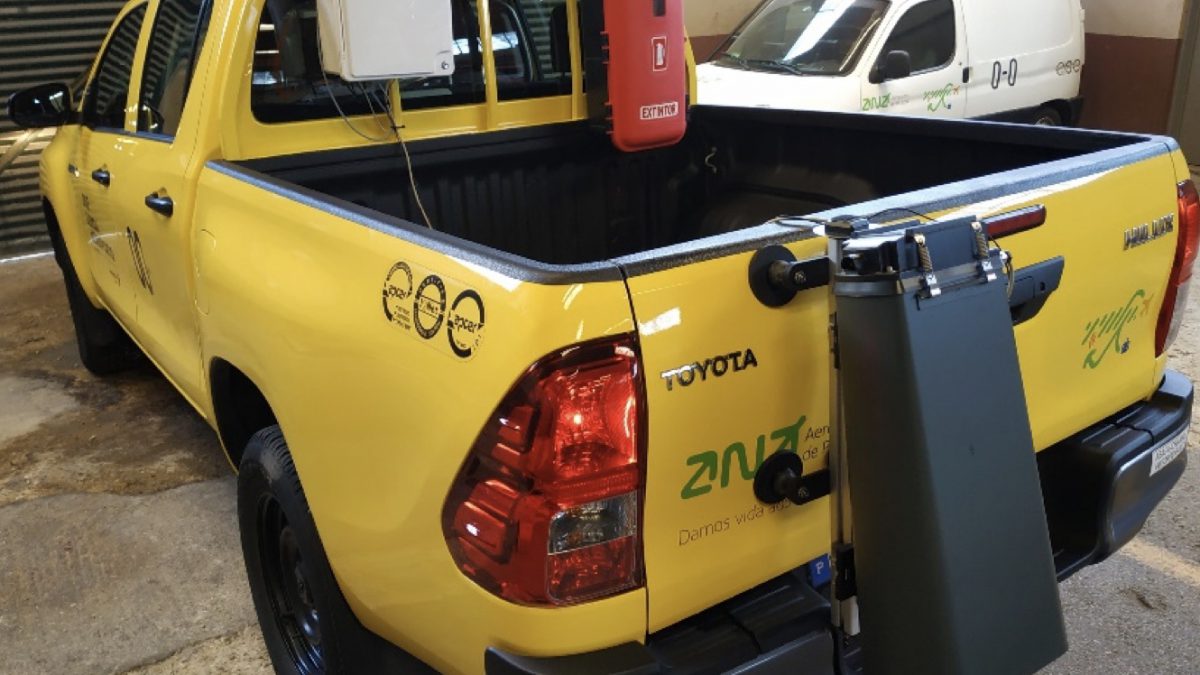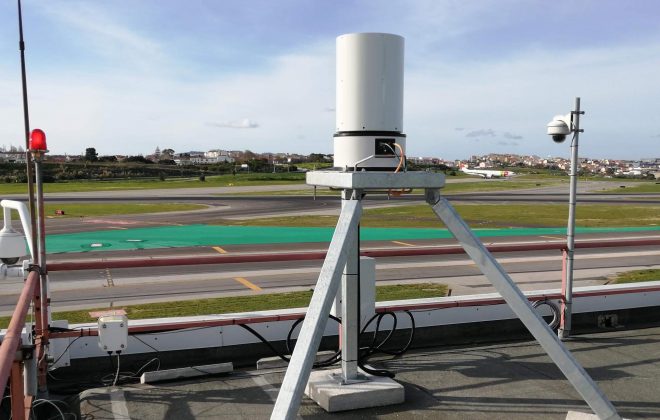Installation of the on-board sensor in a Lisbon airport vehicle
After the completion of the specification work on the on-board equipment, which allowed adapting the XTRANÔ platform to the objectives of the MPP Project and to integrate the road sensor (spectral sensor, capable of detecting the characteristics of the water sheet), the project team installed the on-board system (XTRANÔ Unit + MARWIS Sensor + HMI Console) in the vehicle provided at the Humberto Delgado Airport.
Following this task, the sensor was calibrated and integrated with the XTRANÔ embedded system. It was also verified the compliance with the conditions for installation in vehicles and the issue of ground clearance, defined in the previous survey.
Since the consortium has extensive experience in remote monitoring and on-board systems, it was decided to install a more robust road sensor capable of analyzing some parameters in relation to the road pavement conditions.
In the MPP Project, this component is an intelligent IoT (Internet of Things) road sensor that allows expeditiously to collect “punctual” information on the state of the road (or the runway in the case of aviation) in addition to collecting data on other parameters (e.g. temperature, humidity and friction, including the presence of ice and snow, allowing its use in places with different meteorological characteristics).
With the execution of this task, the sensor data were integrated into the XTRANÔ platform to which metadata are added (e.g. information georeferencing and the associated time – timestamp). The operation of the GSM/GPRS transmission system, which is responsible for transmitting data to a central platform, was also verified, as well as the entire process of formatting the acquired data and checking the reliability of communications.
The use of a road sensor based on optical spectroscopy technology, installed in the vehicle, aims to speed up the calibration procedure of the LIDAR 3D sensor (installed at an observation point, in line of sight to the touchdown zone, or placed in a specific area, in the case of a road).
This calibration procedure only applies to the water sheet characterization functionality to be performed by the LIDAR 3D sensor. It is estimated that this calibration process will be carried out sporadically, and based on rigorous planning in conjunction with the Airport Operations Services, as well as using the system embedded in the support vehicle in order to minimize the duration of this process. preventing any impacts on the operation of the Humberto Delgado airport runway.
The Persistent Runway Monitoring (MPP) project addresses an innovative solution for monitoring and analyzing the state of the runway at airports, even in adverse weather conditions.
The development of the modules for monitoring and analyzing events on the runway (3D scanning) in semi-automatic mode, is based on the information collected through a 3D laser sensor, providing semi-automatically the detection and characterization needs: Floor deformation detection; Detection of FODs (Foreign Object Debris) and water detection on the track.
It should be noted that the work was carried out in the exceptional context of a pandemic caused by the Covid-19 virus.
The project partners, TECMIC – Tecnologias de Microeletrónica, SA, ANA – Aeroportos de Portugal, SA, and INOV – Instituto de Engenharia de Sistemas e Computers Inovação, with the aim of minimizing the impacts caused by the Covid-19 pandemic situation, implemented since the beginning, and immediately, the measures and guidelines issued by the national health authorities, as well as the World Health Organization, following the best practices in this matter.
In view of this new reality, there was a change in the activities planned to be carried out on the airside of Humberto Delgado Airport, resulting in some delay in the execution of the MPP Project.
Despite the referred constraints, the installation work on the vehicle and its use on the track were completed by the project teams.




